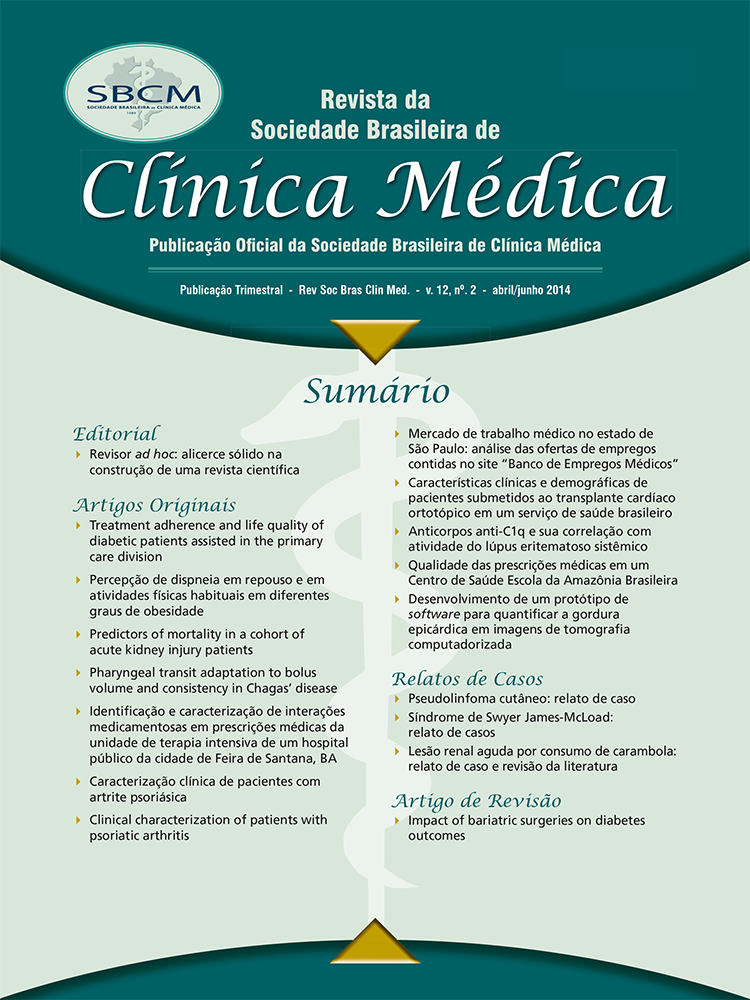Predictors of mortality in a cohort of acute kidney injury patients
Main Article Content
Resumo
BACKGROUND AND OBJETIVE: Acute kidney injury is related to high in-hospital mortality. The use of furosemide has been a controversial point in the prevention and treatment of acute kidney injury. The objective of this study was to identify predictors of mortality in critically ill patients with acute kidney injury with emphasis on use of furosemide. METHODS: A prospective cohort of 108 patients with acute kidney injury admitted consecutively in a intensive care unit and evaluated until death or hospital discharge. The dependent variable was death from any cause. The independent variables were age, sex, race, serum creatinine, potassium, admission diagnosis, urine output, volume infused, the twelve variables of Acute Physiology and Chronic Health disease Classification System II and furosemide use. We performed logistic regression analysis to identify predictors of death. RESULTS: The mean age of patients was 65.74 years with a predominance of women of African descent. The overall mortality rate was 44.4%. In logistic regression analysis, predictors of mortality were: using furosemide, age in years and Glasgow come scale. CONCLUSION: Use of furosemide was a predictor of mortality in a cohort of patients with acute kidney injury. The role of furosemide in the treatment and prevention of acute kidney injury certainly needs to be better evaluated.
Article Details
Declaração de Direito Autoral
Eu (nome do autor responsável) _______________________________________________ declaro que o presente artigo intitulado ___________________________________é original, não tendo sido submetido à publicação em qualquer outro periódico nacional ou internacional, quer seja em parte ou em sua totalidade. Declaro, ainda, que uma vez publicado na revista Revista da Sociedade Brasileira de Clinica Médica, editada pela Sociedade Brasileira de Clínica Médica, o mesmo jamais será submetido por um dos demais co-autores a qualquer outro meio de divulgação científica impressa ou eletrônica.
Por meio deste instrumento, em meu nome e dos demais co-autores, cedo os direitos autorais do referido artigo à Revista da Sociedade Brasileira de Clinica Médica, e declaro estar ciente de que a não observância deste compromisso submeterá o infrator a sanções e penas previstas na Lei de Proteção de Direitos Autorias (n 9610 19 de fevereiro de 1998) que altera, atualiza e consolida a legislação sobre direitos autorais e dá outras providências. Disponível em: http://www.planalto.gov.br/ccivil_03/leis/l9610.htm
|
_________________________ |
___________________ |
|
Local, data |
Assinatura |
SOCIEDADE BRASILEIRA DE CLÍNICA MÉDICA
CNPJ/MF 062.279.617/0001-45
Rua Botucatu, nº 572, cj. 112, São Paulo, SP
Download da Declaração de Direito Autoral.
